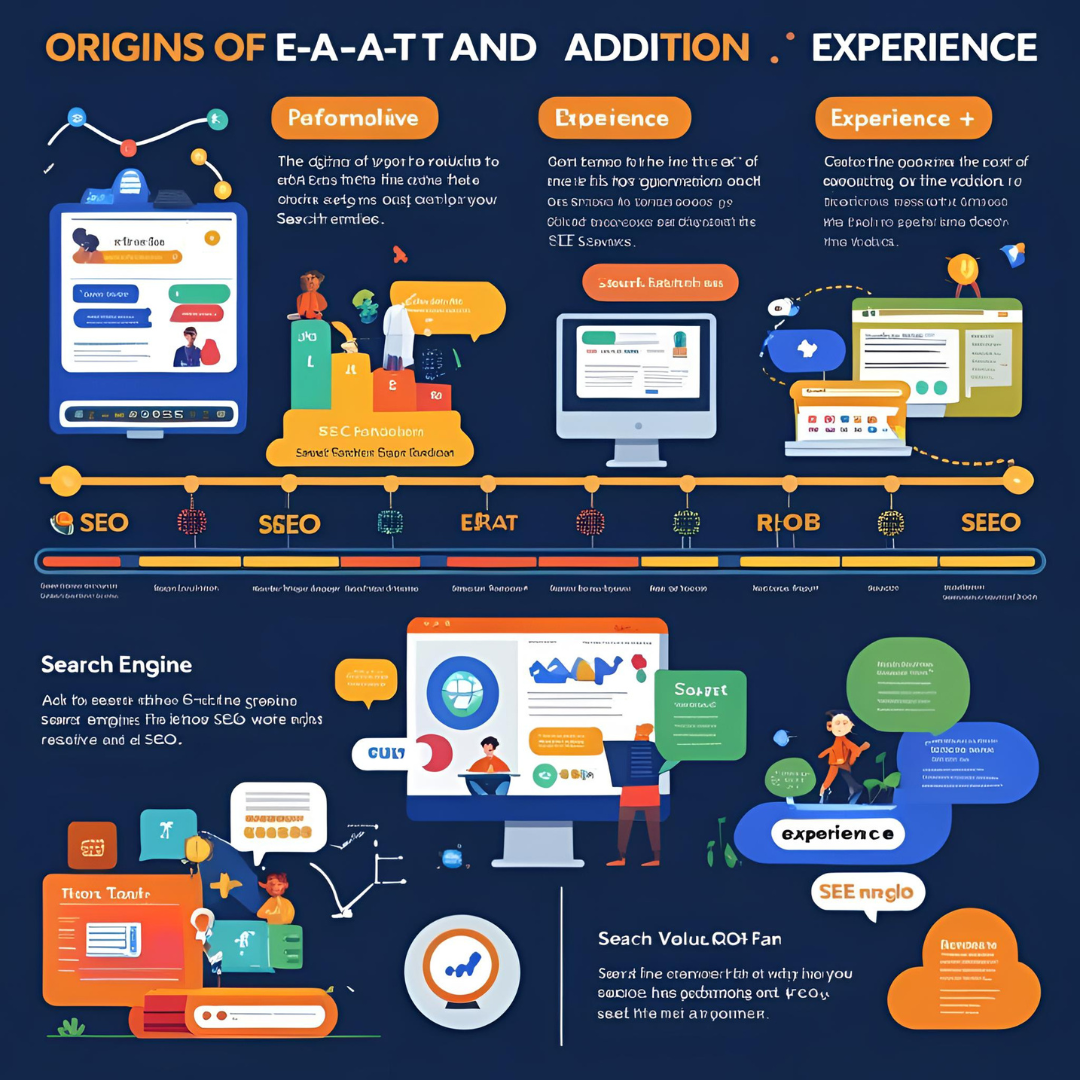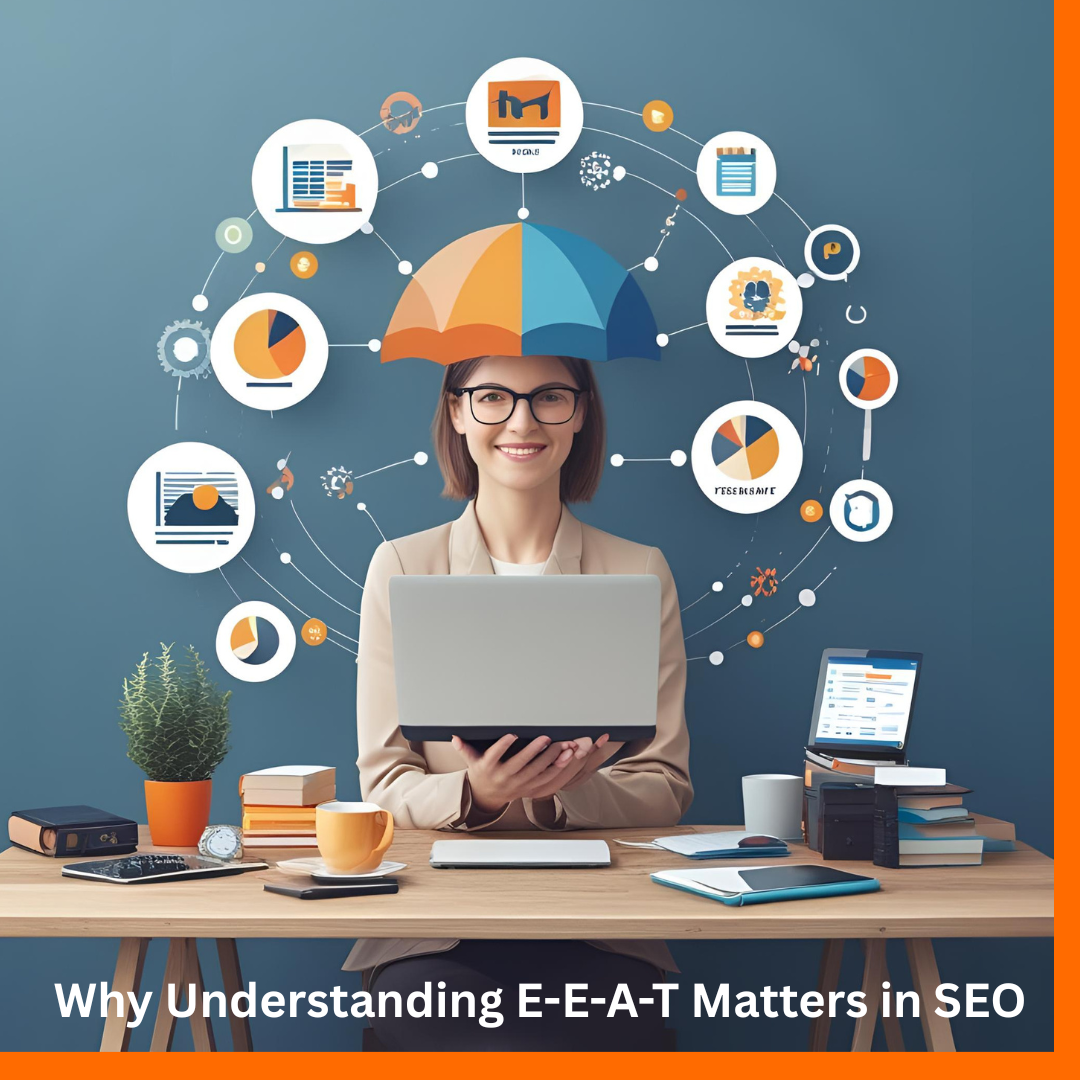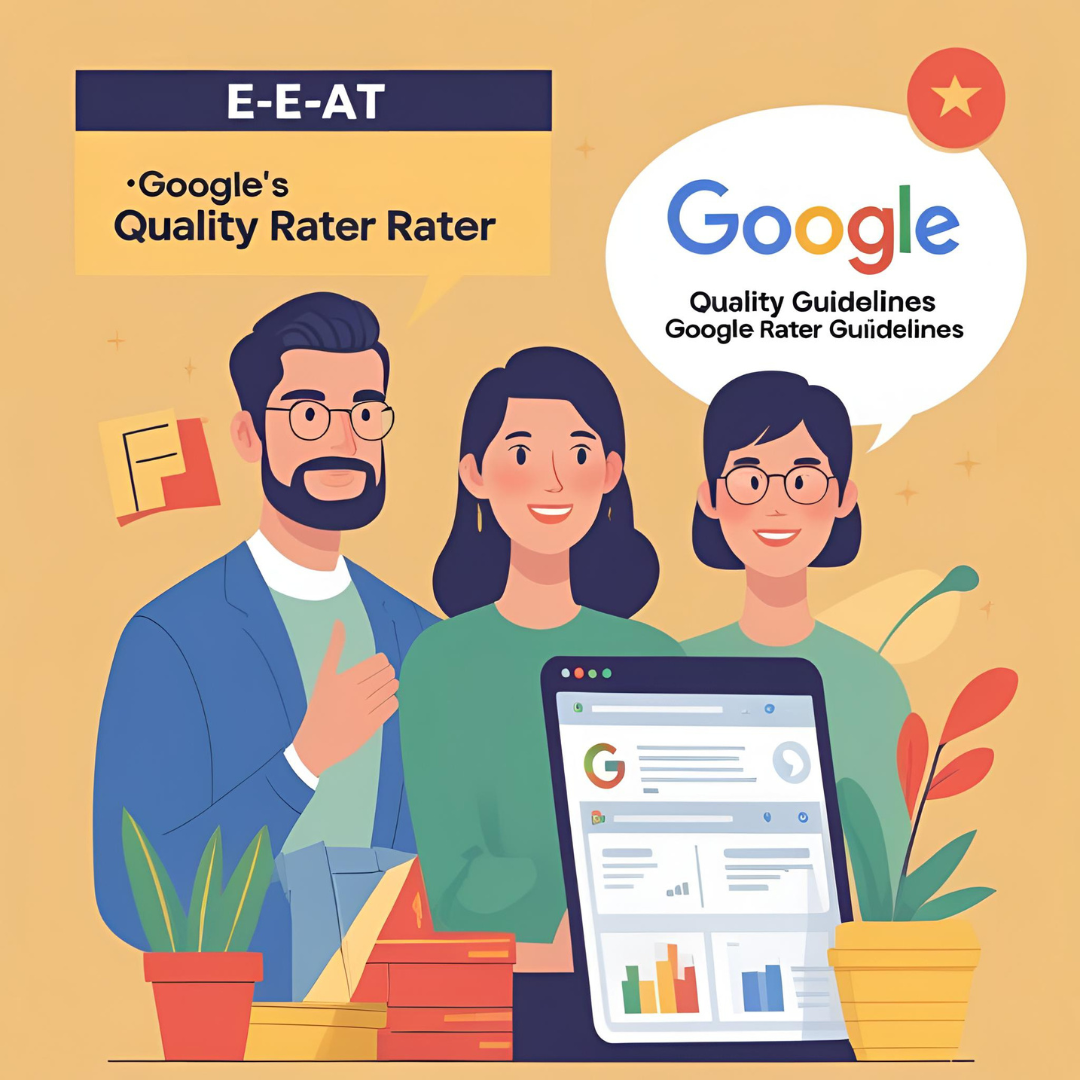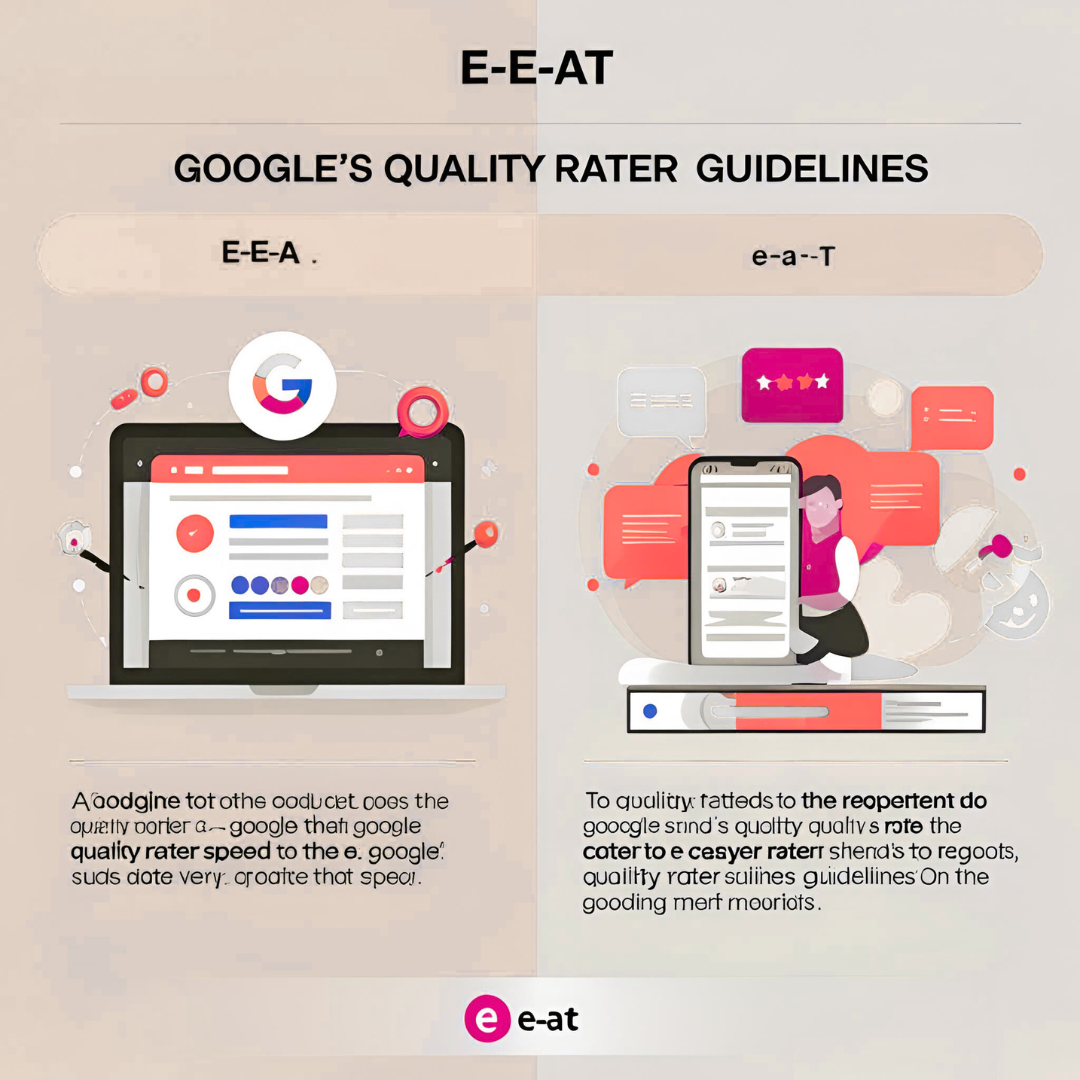Understanding E-E-A-T
Understanding E-E-A-T:
Experience, Expertise, Authoritativeness, Trustworthiness in SEO
In the ever-evolving world of search engine optimization (SEO), Google has become increasingly sophisticated in determining which content deserves top visibility. One of the most crucial concepts that underpins this judgment is Understanding E-E-A-T, which stands for Experience, Expertise, Authoritativeness, and Trustworthiness.
Although not a direct ranking factor in the traditional algorithmic sense, Understanding E-E-A-T is fundamental to how Google evaluates content quality, especially in industries where accuracy, credibility, and user safety matter the most. If your content lacks these attributes, your search rankings may suffer, regardless of how technically optimized your pages are.
This article aims to provide a deep understanding of Understanding E-E-A-T, its role in SEO, and how businesses, marketers, and content creators can apply its principles to build a trustworthy and high-ranking digital presence.
Table of Contents
- What is Understanding E-E-A-T?
- Origins of E-A-T and the Addition of ‘Experience’
- Why Understanding E-E-A-T Matters in SEO
- Understanding E-E-A-T and Google’s Quality Rater Guidelines
- The Components of E-E-A-T Explained
- Understanding E-E-A-T in YMYL (Your Money or Your Life) Topics
- Real-World Examples of High and Low E-E-A-T
- How to Demonstrate Experience in Your Content
- Building Expertise as a Content Creator
- Establishing Authoritativeness in Your Industry
- Earning and Maintaining Trustworthiness
- The Role of Backlinks and Mentions
- Enhancing E-E-A-T through Technical SEO
- Common Mistakes That Undermine E-E-A-T
- The Future of SEO and Understanding E-E-A-T
- Conclusion
1. What is Understanding E-E-A-T?
E-E-A-T stands for:
- Experience – The first-hand, personal involvement of the content creator with the subject.
- Expertise – The knowledge and skill level demonstrated in the content.
- Authoritativeness – The overall reputation of the creator, website, or brand.
- Trustworthiness – The reliability and accuracy of the content, site, and author.
These are criteria used by Google’s Search Quality Evaluators to assess the overall quality of a webpage, particularly when determining which pages to prioritize in Search Engine Results Pages (SERPs).
2. Origins of E-A-T and the Addition of ‘Experience’
The concept of E-A-T was first introduced in Google’s Search Quality Evaluator Guidelines in 2014. It was designed as a framework for human raters to assess whether content meets the standards expected by users and aligns with Google’s mission to provide high-quality, relevant, and helpful content.
In December 2022, Google added “Experience” to the original E-A-T, evolving it into E-E-A-T, recognizing the increasing importance of first-hand, real-world involvement in content creation—especially in product reviews, health advice, and life experiences.

3. Why E-E-A-T Matters in SEO?
Although E-E-A-T is not a direct ranking factor, it influences how Google evaluates page quality, which indirectly affects rankings. Here’s how it impacts SEO:
- Improves user trust and engagement.
- Increases the likelihood of being featured in featured snippets, knowledge panels, or People Also Ask sections.
- Reduces bounce rate and increases dwell time.
- Enhances link-building potential due to higher content credibility.
- Supports long-term organic visibility and reputation.
In short, a site that aligns with E-E-A-T principles is better positioned to withstand algorithm updates and gain the trust of both users and search engines.

4. E-E-A-T and Google’s Quality Rater Guidelines:

Google employs human quality raters who evaluate real-world search results using the Search Quality Evaluator Guidelines. These raters don’t directly influence rankings but their evaluations train the algorithms.
Raters are instructed to evaluate content by considering:
- The website’s purpose.
- The quality and amount of main content.
- The information about the content creator.
- The reputation of the site and content creator.
- How well the content demonstrates E-E-A-T.
For YMYL pages, E-E-A-T is especially emphasized, as misinformation can cause real-world harm.

5. The Components of Understanding E-E-A-T
Experience
- Reflects first-hand knowledge or usage.
- Adds depth and credibility to subjective or personal content.
- Example: A travel blog by someone who has actually visited the location.
Expertise
- Shows the level of skill or knowledge on the topic.
- Especially crucial in YMYL industries like medicine, law, or finance.
- Credentials, qualifications, and years in the field matter.
Authoritativeness
- Indicates how much others recognize your authority.
- Measured through external signals like backlinks, mentions, and social media following.
Trustworthiness
- Measures the accuracy, transparency, and integrity of your content and site.
- Includes technical elements (SSL), business info, contact pages, and fact-checking.
6. Understanding E-E-A-T in YMYL (Your Money or Your Life) Topics
YMYL content is any content that can impact a person’s health, safety, happiness, or financial stability. Examples include:
- Medical advice
- Legal topics
- News and politics
- Financial services
- Safety recommendations
Google places extra scrutiny on YMYL pages. Lack of E-E-A-T can lead to major traffic drops, especially during core updates.
7. Real-World Examples of High and Low E-E-A-T
✅ High E-E-A-T Example:
- Mayo Clinic’s health pages:
- Written or reviewed by medical professionals.
- Clear citations.
- HTTPS secured.
- High domain authority.
- Verified contact info.
❌ Low E-E-A-T Example:
- Anonymous blog giving financial advice:
- No author bio or credentials.
- No sourcing or citations.
- No About or Contact page.
- Poor grammar and broken links.
8. How to Demonstrate Experience in Your Content
Google rewards first-hand experience, especially in product reviews, tutorials, and stories for Understanding E-E-A-T.
Tips:
- Share personal stories or case studies.
- Include photos/videos of yourself using the product or service.
- Add behind-the-scenes content.
- Use phrases like “In my experience…” or “When I tried…”
Authenticity builds trust and credibility.
9. Building Expertise as a Content Creator
Establishing expertise means showcasing knowledge that users and Google can recognize.
Strategies:
- Include detailed author bios with credentials.
- Add LinkedIn or social media links to author profiles.
- Publish guest posts on authoritative sites.
- Stay consistent in niche topics to build topical authority.
Consistency builds perceived expertise.

10. Establishing Authoritativeness in Your Industry
Authority comes from recognition by others—both humans and search engines.
How to Build It:
- Earn high-quality backlinks from respected domains.
- Be cited or mentioned in media, forums, podcasts.
- Host webinars, podcasts, or interviews with other experts.
- Get listed in industry directories or government websites.
Authority is cumulative and grows over time.
11. Earning and Maintaining Trustworthiness
Trust is the glue that holds E-E-A-T together.
Best Practices:
- Use HTTPS encryption.
- Display privacy policies, terms of service, and disclaimers.
- List physical business addresses and customer service contacts.
- Respond to negative reviews professionally.
- Avoid deceptive ads or clickbait.
A single breach of trust—such as plagiarism or fake reviews—can damage your SEO and brand long-term.
12. The Role of Backlinks and Mentions
Google values external validation.
Trust and authority signals include:
- Backlinks from trusted sources (e.g., Forbes, HubSpot)
- Mentions of your brand in credible articles
- Being quoted as a source in online discussions
Tip: Use tools like Ahrefs or SEMrush to monitor your link profile and pursue quality link-building strategies.
13. Enhancing E-E-A-T through Technical SEO
Technical aspects can either support or sabotage your E-E-A-T.
Optimize:
- Page speed for better UX.
- Mobile-friendliness for accessibility.
- Structured data (schema markup) for rich results.
- Secure site (HTTPS).
- Clear site structure and easy navigation.
Technical trust equals usability trust.
14. Common Mistakes That Undermine E-E-A-T
Avoid these pitfalls:
- Anonymous authorship or fake identities
- No citation of sources
- Outdated content or broken links
- Misleading headlines or exaggerated claims
- Poor grammar or spelling errors
- Hiding contact information
Each of these mistakes signals low credibility to both users and Google.
15. The Future of SEO and E-E-A-T
As search engines evolve with AI and machine learning, E-E-A-T will become even more important.
Future trends:
- Authorship verification via digital identity
- AI content being judged for human-like experience
- Greater use of structured data for content context
- Video and voice content needing E-E-A-T proof points
By investing in E-E-A-T now, you’re future-proofing your content strategy.
16. Conclusion
E-E-A-T is more than an acronym—it’s the foundation of digital trust. In an era where misinformation is rampant, Google prioritizes content that demonstrates real experience, proven expertise, earned authority, and unshakable trustworthiness.
By aligning your content, authorship, and site with E-E-A-T principles, you do more than please an algorithm—you build long-term value, trust, and brand credibility.
In SEO, rankings may fluctuate, but trust is permanent.
<< Go Back to Blog
<< Go Back to Complete SEO Tutorial
>> NonixPak on Facebook

